As attraction technology improved, some rides were able to do away with a big, clunky, metal track. In the case of Epcot's Universe of Energy (which debuted in 1982), cars were guided by a less-obvious 1/8 inch wire through the dinosaur swamp. About a decade later, the elevators on the Walt Disney World version of The Twilight Zone Tower of Terror were able to move on a set path from one shaft to another due to wireless transmissions. Although these cars still ran on a small wire track, the wireless communication element pointed the way to Disney parks' trackless ride breakthroughs in the new millennium.
I recently completed my theme park travel checklist of riding all of Disney's trackless wonders: Pooh's Hunny Hunt at Tokyo Disneyland, Aquatopia at Tokyo DisneySea and Mystic Manor at Hong Kong Disneyland. Yes, they all exist outside of the U.S. (That streak will continue when a fourth trackless attraction arrives next year in Paris' Walt Disney Studios Park. It's a "Ratatouille"-themed ride called something like Remy's Discotheque du Fromage. Or maybe it's called Ratatouille: L'Aventure Totalement Toquee de Remy – I like my title better.) Before I get too off-track – or, in this case, would it be on track? – let's begin with Disney's first totally trackless attraction.
Pooh's Hunny Hunt (September 2000) (Follow the link for on-ride video.)
To theme park outsiders, this dark ride might seem like all of the other Winnie the Pooh attractions in Disney parks. There's a blustery day, a bouncing Tigger, plenty of hunny, plus Heffalumps and Woozles. So, sure, all of Pooh's greatest hits are present, but the way you experience them is totally different than in other rides, thanks to the first-of-its-kind trackless ride system, developed by Walt Disney Imagineering.
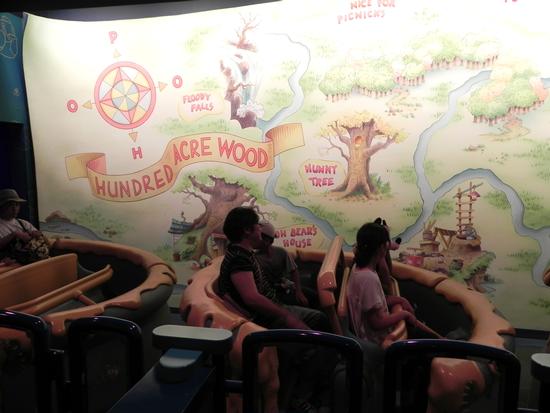
Here's how it works behind the scenes: there are electronic sensors placed throughout the floor of Pooh's Hunny Hunt. A computer, drawing on a local positioning system, communicates with all of the ride vehicles, directing them on unique routes based on the floor sensors. Because of this, up to eight vehicles can exist in one ride scene, in which they all perform the same way, go in different directions or appear to "dance" together.
Now, here's how it works when you're actually experiencing the ride: three attraction vehicles are launched at a time and they're all shaped like hunny pots (yes, we're sticking with Pooh's spelling of honey). The three pots gather in a triangle in front of the ride's opening scene, then each follow their own path through the large "blustery day" room. It's here where the magic of the trackless system comes alive, in tandem with fully immersive theming. While your pot might be following Pooh as he and his red balloon get blown from one side of the scene to the other, another vehicle might be hanging out with Owl and his rickety tree house. You might take a left turn, double back, spin around a tree – there's no track in front of you to indicate what will happen next.
Eventually, the three pots gather again to bounce along with Pooh's most excitable pal, who tells us the wonderful thing about Tiggers (as long as you understand Japanese). And then it's off to Pooh's house before we emerge into the world of Heffalumps and Woozles. From a trackless perspective, this is the most interesting scene in the attraction, because it offers the most varied ride experience. As you enter the playfully chaotic room, pots from previous batches of three appear to be swirling every which way. Then, you break off on your own path, destined to get shot by a Woozle's cannon or see a hunny-sucking Heffalump steal some liquid gold from your pot. Before too long, you regroup with the other two pots, Pooh gets his hunny and the story ends happily (except for the fact that you'll never fully enjoy one of the other Pooh dark rides again).
As one of the most technologically advanced (as well as one of the most enjoyable) attractions in Tokyo Disneyland, Pooh's Hunny Hunt usually maintains lines of more than one hour. It also boasts the second-hottest Fastpass in the park – following another Tokyo exclusive, Monsters Inc. Ride & Go Seek. With some luck and planning, I was able to take a few spins on the ride, each one revealing new facets of the attraction (oh, there's Gopher!) as well as a basic pattern.
It appeared to me that, despite talk of "random paths," there are three basic experiences for the Hunny Hunt pots. Which one you get depends on which of the three pots you sit in at the load station. Each one offers a unique perspective on the "blustery day" and "Heffalump and Woozles" scenes. If pressed for a favorite, I'd pick the first pot, which seems to allow you the most time and interactions with Pooh's nightmare creatures. But, really, you shouldn't say "no" to any of these pots. No matter which vehicle you're in, it's evident that this is the best Fantasyland dark ride on the planet.
Aquatopia (September 2001)
While the divergent paths within Pooh's Hunny Hunt can be boiled down to three different routes, no such simplicity exists in Aquatopia, which debuted with the 2001 opening of Tokyo DisneySea. The retro-futuristic Port Discovery attraction features the same computer-run local positioning system as Pooh, but it appears to get more of a workout here, with dozens of routes that appear to shift constantly.
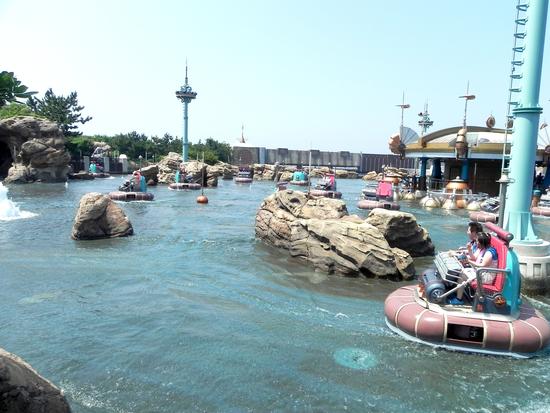
Although its name suggests that the attraction is an update of Disneyland's Autopia, there are few similarities, other than both rides are outside and set in futuristic lands. Instead of allowing guests to drive a car connected to a track, Aquatopia takes the control (and the track) away from riders, who sit in "hovercrafts" that rove around a small body of water, at least when it comes to depth. The pool is about two inches deep – enough to cover the surface while allowing the wheels of the ride vehicles to touch the ground.
The illusion of Aquatopia doesn't quite, ahem, hold water. Sure, much of the shallow liquid is kept moving with whirlpools, jets and waterfalls, but you can easily see the bottom the second you sit down in your hovercraft. And while there's no track to spot, you can see the clear outlines left from the millions of circuits completed by the vehicles. Not that it makes the ride predictable. During my ride on Aquatopia, I couldn't help but try to guess which way we'd go next and I was almost always wrong, especially when our next move was spinning in place or going backward.
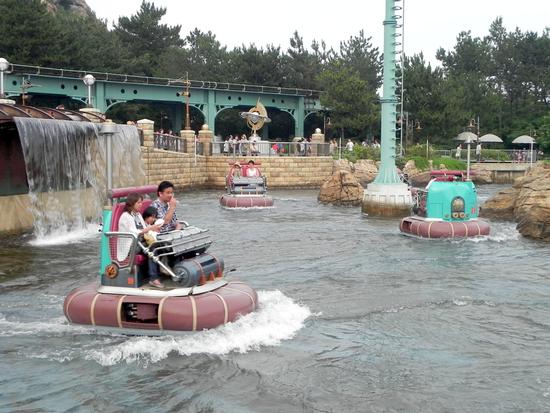
In the summer months, Aquatopia boasts an extra feature: you can get really soaked on the ride. Given the shows and parades that turn giant hoses on Japanese theme park guests, this is something that most visitors get pretty excited about. Before I visited, I read that Aquatopia would offer "dry" and "wet" courses, which in practice turned out to be more like "wet" and "wetter." To Tokyo DisneySea's credit, about six cast members were positioned outside of the ride at all times to make sure this wasn't a surprise. (We picked the less-wet course and managed to make it through the ride with barely a spritz. But others on the same course didn't end up so lucky – or were luckier than us, depending on your perspective.)
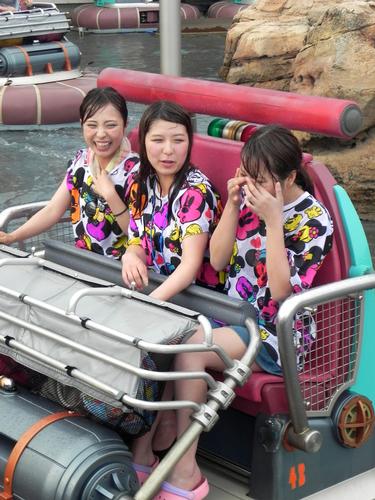
Even if Aquatopia takes fantastic advantage of the trackless ride system (it's the least predictable experience of any of Disney's trackless attractions, by far), the results are lackluster. Like I said, the illusion doesn't really work, the ride doesn't move fast enough to provide much of a thrill and there's really nothing to look at, other than some bits of rockwork and other hovercrafts. This isn't helped by the attraction's location in Port Discovery, the least detailed of DisneySea's otherwise immersive ports.
I actually had a better time watching the ride than going on it. Sure, it didn't hurt that many riders were expressive Japanese guests that were reveling in the experience of getting drenched. But it was interesting just to watch Aquatopia go, like some water-logged Rube Goldberg machine. Although I tried, I was never able to divine any sort of pattern for the hovercrafts. Maybe if the guy who memorized the "Press Your Luck" gameboard was still around, he could figure it out.
Mystic Manor (May 2013) (Follow the link for on-ride video.)
For more than a decade, if you wanted to ride one of Disney's trackless rides, you had to visit Tokyo. That changed earlier this year when Mystic Manor opened its doors as the culminating triumph in Hong Kong Disneyland's busy era of expansion. The fantastical dark ride, which Theme Park Insider readers named the year's best new attraction, takes visitors on a tour through the antiquities collection of Lord Henry Mystic and his chum, a monkey named Albert.
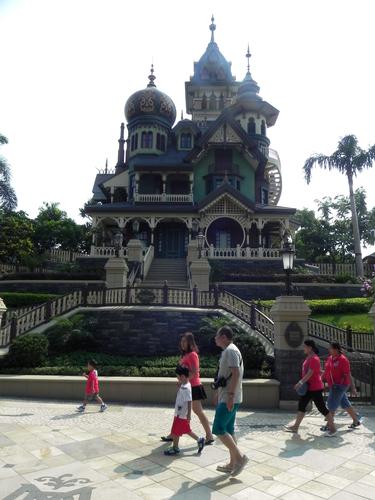
(Before we get to the ride experience, I should mention that Mystic Manor has a meticulously designed queue that provides clues to the attraction's scenes through pictures of Lord Henry's adventures and includes a few easter eggs for fans. These include a painting of "maestro" Danny Elfman – who created the ride's soundtrack – and a group shot of Lord Henry with the Society of Explorers and Adventures, including one Harrison Hightower, from DisneySea's Tower of Terror.)
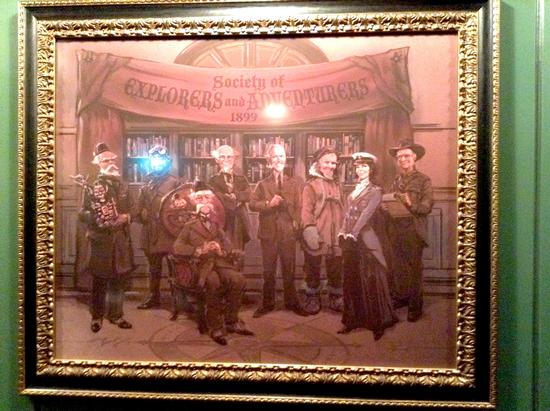
Mystic Manor features a newer version of the technology employed in Tokyo, reportedly functioning on a barcode system (yes, like at the supermarket) that works in conjunction with signals sent via WiFi. In terms of functionality, it's a lot like Pooh: four Mystic Magneto-Electric Carriages are simultaneously dispatched from the load station, you gather together for the first scene and then each car has a slightly different ride experience.
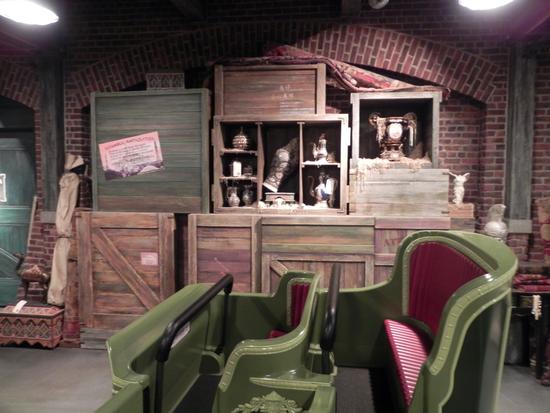
Notice that I said slightly, which is where Mystic Manor differs from Pooh's Hunny Hunt – at least from the perspective of a trackless ride experience. After being gathered for the first two scenes, and before regrouping at the attraction's exciting climax, the carriages more or less follow each other, Haunted Mansion-style. (That's not the only reference to the Disney classic; a lively Medusa painting and some familiar-looking busts also call Mystic Manor home.) The vehicles never criss-cross or almost hit each other in the way that makes Pooh's centerpiece scenes so fresh and exciting. The ride experience is surprisingly similar, no matter which carriage you're seated in. For me, the first vehicle is the winner, because the back carriages sometimes enter a room while the event is already happening. If you're in the front, you get to actually see each scene come together. On the other hand, if you're towards the back, you get to linger in some areas a little longer. Given the manor's detailed delights, that can be a plus, especially if it's not your first time on the ride.
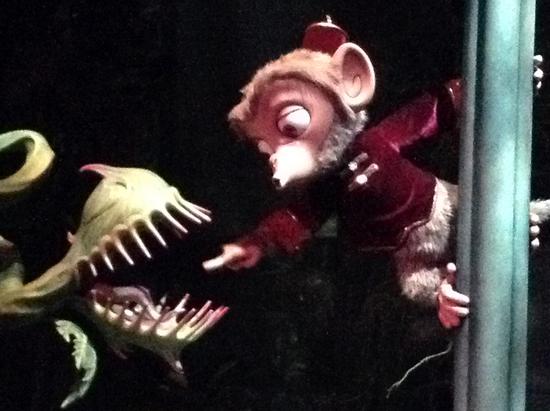
Ride variety aside, Mystic Manor's trackless system serves as a wonderful delivery system for the fantastical thrills found around every corner. Nothing on a track could move as swiftly – and smoothly – as the ride brings you face to face with a Tiki god, envelops you in the gale force winds of the Monkey King or puts you in the firing line of a cannon. (Cannons seem to be popular on trackless rides; how are they going to fit one in Remy's world?) In a way, if the trackless element was too showy, it could detract from the story, the characters and the wonderful effects that deserve to be the focus of this first-class attraction. The trackless system is merely the best way to experience all that Mystic Manor contains.
And if you ever want a more obvious display of random ride patterns, there's always a two-inch-deep pond waiting for you in Tokyo.
Tweet
In those cases, the trackless ride system allows designers to amplify the power of great encounters. But with Aquatopia and Antarctica, the ride systems are multiplying much smaller values, so you're left with lesser results.
James Trexen - You've got one problem. None of the trackless rides are "World's Best" caliber. Sorry, man...
It's a good article, but trackless rides are over-hyped. There is so much more than makes a great ride than a trackless ride system.
While trackless technology opens up possibilities, there is yet to be a single ride of its kind that is arguably a "World's Best Ride". Maybe that will come in the future, but I'm doubtful that the trackless technology will be the single biggest reason that it earns that distinction.
@James and Eric - I think "world's best" is in the eye of the beholder. Mystic Manor is unlike any attraction on the planet (certainly that I've ever been on). It's surprising, funny and and a joy to ride again and again. Is it among the world's best? It depends who responds to the question.
To build on Robert's comments - at the end of the day, the trackless systems are a delivery method that works in tandem with the environment that surrounds the vehicles. It plays a role. So, the trackless ride system is not the main reason to ride Mystic Manor. But, the ride wouldn't be as interesting and engaging without it.
This article has been archived and is no longer accepting comments.